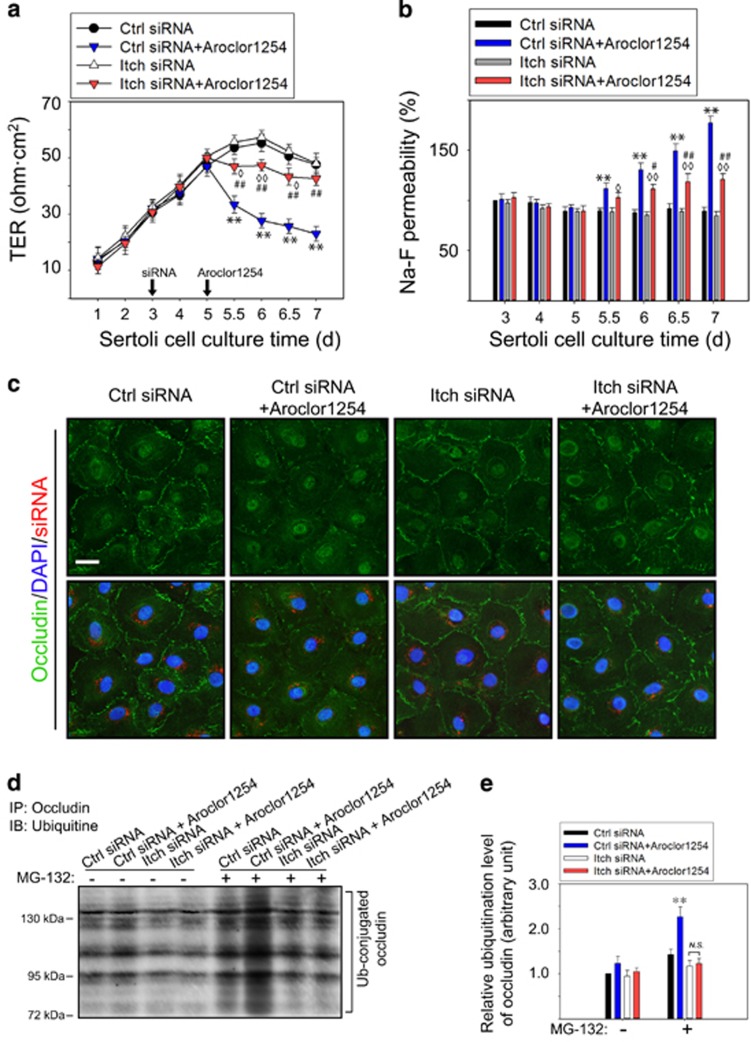Figure 6.
The effects of Aroclor1254 on the barrier function of SC epithelium after Itch knockdown. The SCs were treated with or without Aroclor1254 in the control siRNA or Itch siRNA-transfected SCs as the regimen depicted in Supplementary Figure S3a. (a) Barrier function assay in vitro by measuring the TER value of different groups on each culture day. The extent of barrier function decline in Itch-silenced SCs induced by Aroclor1254 was not as great as in the control siRNA-transfected cells. (b) Na-F permeability assay with the value in the Ctrl siRNA group on day 3 was arbitrarily set at 100%. Itch silencing partially antagonized the disruption of BTB by Aroclor1254. Each bar refers to mean±S.D. of n=3 experiments using different batches of SCs. **P<0.01, compared with the Ctrl siRNA group. ◊P<0.05; ◊◊P<0.01, compared with the Itch siRNA group. #P<0.05; ##P<0.01, compared with the Ctrl siRNA+Aroclor1254 group. (c) Immunofluorescence assay to detect occludin (green) on day 6 after Aroclor1254 treatment for 24 h in the Itch siRNA or the control siRNA-transfected SCs with cell nuclei stained with DAPI (blue). The transfected siRNAs were indicated by siGLO-Red (red). Scale bar=25 μm, which applied to all micrographs in (e). (d) Co-immunoprecipitation assay to examine the ubiquitination level of occludin after Aroclor1254 treatment in the Itch siRNA or the control siRNA-transfected SCs on day 7. MG-132 was used to inhibit the proteasome degradation of ubiquitinized proteins. (e) Histogram summarizing the result shown in (d), in which the ubiquitinized occludin level in the control siRNA-transfected SCs without MG-132 treatment was arbitrarily set at 1. **P<0.01, compared with the corresponding Ctrl siRNA group. NS, no significant difference between two indicated groups

